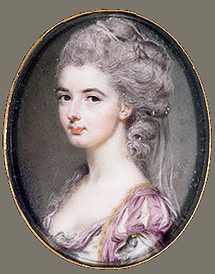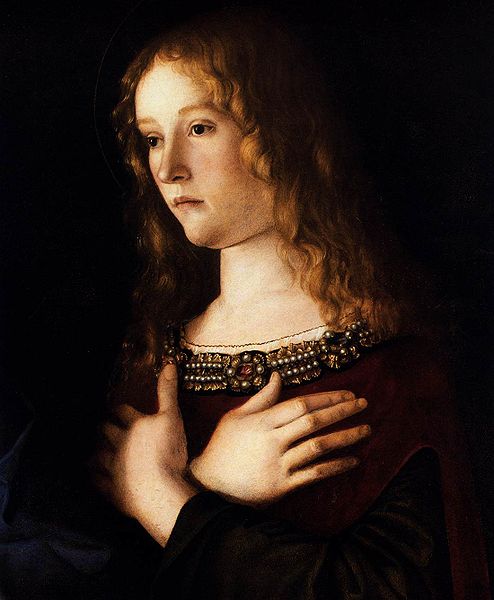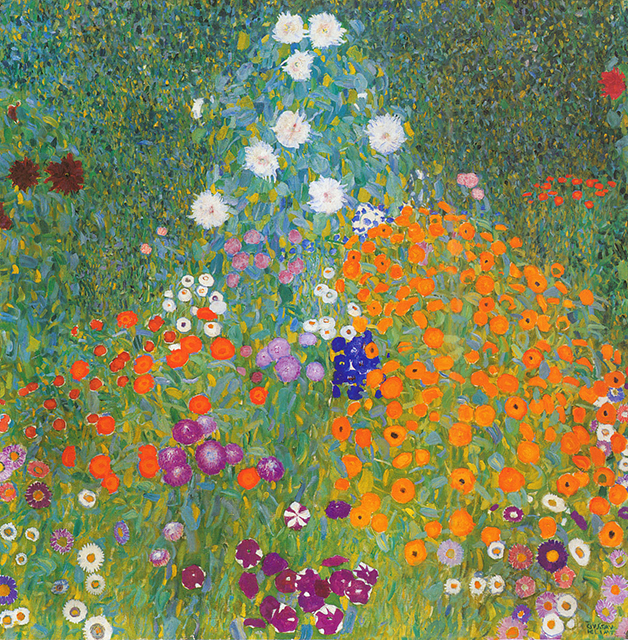Self-Knowledge • Fear & Insecurity
Am I Fat? An Answer from History
We tend to feel that concepts like ‘beauty’ and ‘ugliness’ are things that can be objectively defined, are eternally valid and are founded on unarguable criteria. Someone is either beautiful or ugly – and there isn’t much more to discuss than that. More pointedly, when we consider ourselves, we can be brutally frank: we are either fat or thin, mousy or sexy, plain or pretty. We either measure up to an objective standard or – more tragically and typically – we don’t.
But this is to overlook a hugely intriguing fact revealed by history: that judgements about who and what is considered attractive keep changing, sometimes very radically. A beauty in one era can be thought entirely plain in another. One century’s iconically bewitching figure may elicit only a puzzled shrug a generation later. This raises an intriguing possibility: that we might not be so much ‘ugly’ or ‘mousy’ or ‘fat’ as ignored by a set of rather partial, hasty and unimaginative current definitions of beauty. We may have nothing more to hate than the way that our own age has taught itself to see.
Today, for example, we expect to feel dismayed and ashamed the moment our hair begins to go grey. We are about to be exiled – by natural bodily processes – from the realms of acceptable appearance. We might consider a wig or have our hair dyed. But inside we cannot escape the conclusion that we have become visual outcasts. But in the 18th century, this experience was wholly unknown. When, aged 28 or 37, people noticed a grey strand in their locks, their reaction wasn’t one of horror but of relief and pride. At last, they were growing up, at last they were becoming the mature and admirably experienced entities to whom their societies accorded high status. Fashionable young people couldn’t wait for nature to take its course and had their hair artificially greyed, so as to hasten the arrival of the kind of beauty celebrated by contemporary canons of taste.

At last, some lovely, lovely GREY hair!
In a similar way, wearing a wig is nowadays unmentionable; to point out that someone doesn’t have their own hair sounds like an insult. But it hasn’t always been so. In the 1770s, the young Mozart – like all boys of his time – used to dream of the moment when he would finally be allowed to put some curled horse hair on his head.

Mozart at 13: proud, at last, to have his own wig
To take another example, beauty at present is firmly associated with having a joyous and cheerful manner. We think of a pert-mouthed fashion model opening the perfect present, of a toned athlete in their moment of triumph or of ambitious people laughing at the beach. But other eras have known, and emphasised, quite different demeanours: in particular, the charm of faces that look as if they have known and understand suffering. Depicted in art, these faces are often resolutely not smiling – but instead look lost in thought, absorbed by their own ideas and taken up with an internal dialogue around pain and loss. They may well pull a smile if asked, but it will be possibly rather strained, and brief, like a moment of sunshine between dark grey clouds. Such faces can be beautiful not despite their sadness, but – however curious this sounds – precisely because of it, for we feel in the presence of people who would be in a position to understand our own difficulties, someone around whom it would not be necessary to put up a front in the name of seeming ‘normal’. Given how much our longing for connection is driven by the hope of being understood, and given how much of life is tragic in structure, it follows that the sort of people we may feel readiest to find beautiful are not those whose faces suggest they find the business of living obvious or easy; but those who seem to be as sometimes puzzled, discomfited and saddened by it as we are; those who feel a regular need to withdraw from the sentimental bonhomie of daily life; those who are alive to anxiety and catastrophe – and who may, like us, frequently feel close to tears at so much that is regretful and sad.


(Top) Rogier van der Weyden, Magdalene Reading, c.1432; (bottom) Giovanni Bellini, Mary Magdalene, 1490: The beauty of sadness, well emphasised in the fifteenth century – less well remembered subsequently.
However, the most dominant aspect of what our age considers beautiful concerns weight. Our anxiety about whether or not we are acceptable-looking has settled on a single overwhelming and obsessive criterion: the measurement of our waists. We inhabit a cultural epoch that has opted to give stupefying moral prestige to thinness.
But the connection between thinness and beauty is an astonishingly recent invention. Prior to the 1960’s, few people in all of human history had ever thought that having a flat stomach or miniscule thighs was a recipe for beauty.

The Venus of Willendorf: A figure to aspire to 30, 000 years ago.
The oldest representations of humans routinely emphasised qualities that would be disdained by the magazines of today. In classical times, people had no problem at all with a few folds around the midriff, ample thighs, sturdy wrists and flat feet.

Aphrodite surprised as she bathes, 2nd century Roman copy of a Greek original. Beauty that has been able to breakfast.
According to classical mythology, the most beautiful women in the world were the Three Graces, the daughters of Zeus: Aglaia (radiance); Euphrosine (joy) and Thalia (flowering). When the Flemish master Peter Paul Rubens sought to paint a gathering of these women, he was confident of what kind of figures he would need to accord them in order successfully to depict them as the most alluring females of all time.

Peter Paul Rubens, The Three Graces, 1635; the most beautiful, and perfectly proportioned women ever to have existed.
Rubens wasn’t being insincere or coy or kind; in his choice of models, he was simply reflecting the common-sense of his age. His Three Graces was an immediately popular picture because it showed what everyone already knew that sexiness and beauty really looked like; the work was telling a well known truth about desire.
We may think our own notions of beautiful dimensions are eternal. But they date, at best, to around 1962, when a model from suburban London – born in 1949 as Lesley Hornby – started modelling under the nickname ‘Twiggy’ and became for a time the most famous model in the anglophone world. But however indisputable her charms may seem, we know that she could never have secured a slot as one of the three graces at any time in history before her own – which should, at the very least, render us thoughtful about the dimensions of our own waists.

Twiggy, with a twenty-three inch waist, modelling for Vogue in 1962.
The reality is that there are always more available varieties of beauty at any one point in time than a particular society or era is willing to recognise. There are as many types of beauty as there are visions of happiness: there is tiny-waisted beauty and flat-footed beauty, sad beauty and impish beauty, chinless beauty and jowly beauty. But seldom can we ‘see’ more than a fraction of these possibilities.
If every era tends to be blind, it is because we have such difficulty appreciating what is before us until it has been presented to us with sufficient skill, glamour and authority. We look but do not notice. One way to think of art is as a medium which has, throughout its history, been dedicated to using its prestige and technical talent to opening the eyes of its audiences to varieties of beauty and interest that would otherwise have been missed. Every great artist’s work amounts to an attempt to stir lethargic viewers into paying proper attention to a hitherto neglected aspect of reality. Through Edward Hopper’s paintings, we become attuned to a beauty in late-night diners and isolated motels. The screens of Hasegawa Tohaku stir us to see the beauty of misty mornings and pine trees through fog. Van Gogh teaches us to look more carefully at the sublimity of irises. Thanks to Jackson Pollock, we become aware of the dance and uncontained energy of flicked paint. With Donald Judd as our guide, we start to see beauty in a monolithic series of concrete rectangles arraigned on a scrubby desert horizon.

Donald Judd, 15 untitled works in concrete, 1984, Marfa, Texas
Artists do not invent the charm of the phenomena they depict; they merely reveal a charm that was always latent but overlooked by habit and prejudice. But there are never, perhaps, enough artists to do the world and its inhabitants justice. There are always styles of beauty that have been missed; much that fairly deserves to be admired lies in ignorance, darkness and embarrassment, starting (perhaps) with our own appearance. We too might well currently be languishing without anyone to alert others to our particular version of beauty: small-boned beauty or bald beauty, rabbit-like beauty or kindly-old-person beauty… In our way, we are like Twiggy in the age of Rubens or a splashed-paint Rothko canvas in the controlled, serene era of Piero della Francesca.
We can’t shift the history of art and of perception by ourselves, but we can notice – and draw comfort from knowing – that some of what we are has undeniably been unfairly overlooked or condemned, and that there is likely to be ample beauty in our features, even if the wider world is not yet in a position to see it. We are still waiting for an advocate for our kind of beauty, just like the magisterially built person living in what is now lower Austria once had to wait for the arrival of the artist who sculpted her into the Willendorf Venus. And while we wait, we should remember that we are letting ourselves be judged in a provincial way, by the relatively random values that happen to predominate in our particular place at our specific time. We are submitting to the judgment of some random influential strangers because they are nearby. But we should more rightly join in our minds to the thoughts of the wiser, kinder and more perceptive people who happen to have lived (or are living still) at a greater distance from us. Just as we can see the beauty in Rubens’s models, so we should imagine him seeing the less obvious but real beauty in us. We are not ugly at all. We are just far from the sort of people who would know how to recognise what we offer. While we wait for them to arrive, without any skills to our name, we can practice the generosity they pioneered on our own appearance. Starting with ourselves, just after the bath.


























